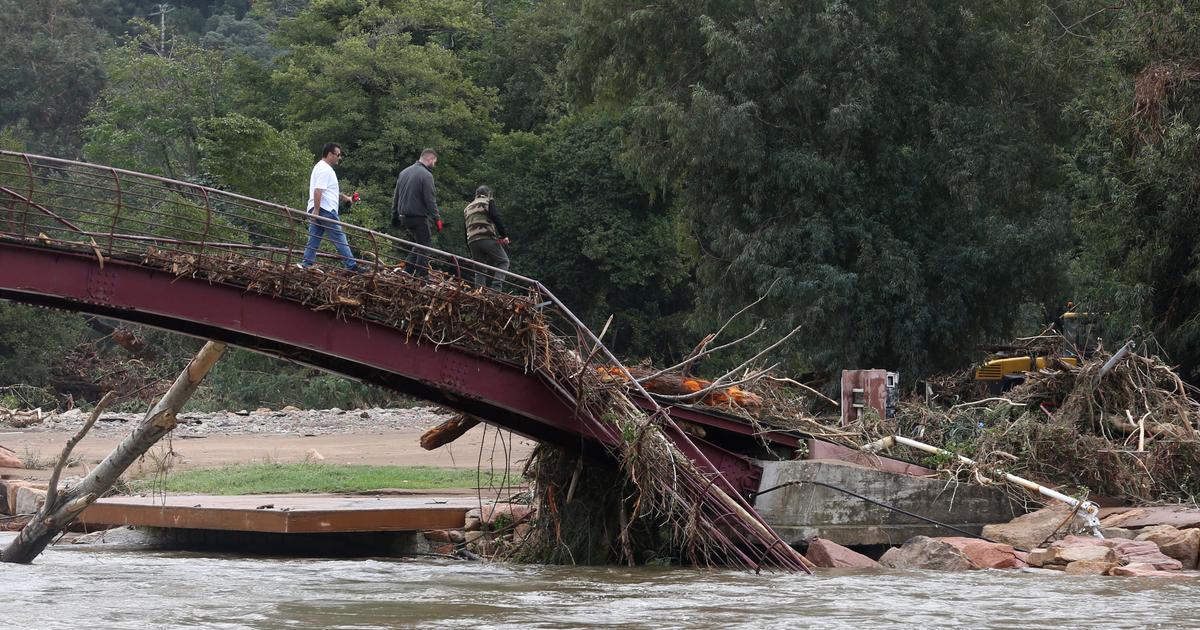The insurance sector has a wound that is bleeding more and more.
The losses suffered by the industry due to natural disasters exceeded 120,000 million dollars (about 110,000 million euros at current exchange rates) in 2022, according to data compiled by the German firm Munich Re. Hurricane Ian, which devastated Florida ( USA) last September, is responsible for half the hole.
The second costliest event was the Australian floods last February, which caused losses of more than $4 billion.
And it seems clear that 2023 will unfortunately not avoid adverse climatic events.
Without going any further, California, an area that traditionally suffers from severe droughts, has opened the year with torrential rains that have caused nearly 20 deaths.
This is a qualitative leap compared to the situation at the beginning of the 21st century, when the damage caused by nature barely reached 50,000 million a year.
"It is undeniable that climate change is triggering losses," acknowledges Ernst Rauch, a scientist at Munich Re, in a recent interview published by Bloomberg.
“Insured losses of more than 100,000 million a year is the new normal”, he concludes.
In this context, the catastrophe insurance market is subject to strong pressure, since to the greater frequency of adverse weather events must be added the increase in inflation (which makes reconstruction after a disaster more expensive) and the decrease of traditional reinsurance capital due to loss of investment profitability.
Tanja Wrosch, a fund manager at Credit Suisse, believes that the conjunction of these factors is causing reinsurance premiums to rise, making cat bonds more attractive as an investment alternative.
In a market document distributed by the Swiss bank, Wrosch explains that there is a strong imbalance between supply and demand for reinsurance capacity.
Specifically, reinsurance capital fell by more than 30% in the first nine months of 2022, according to figures from Swiss Re. Reinsurance companies are entities that, through a contract, accept coverage from one or more Risks assumed by another insurer.
“Catastrophe bonds provide an alternative option for introducing climate risks into the capital markets.
In our opinion, they are the ones who will gain the most with the current dynamics.
As a consequence, premiums have reached record levels”, argues the Credit Suisse manager.
Given the expected decline in traditional reinsurance capacity and the increase in premiums for natural catastrophe coverage, Wrosch believes that alternative risk transfer to investors through catastrophe bonds will become increasingly important and therefore can be expected a good crop of bond issues.
“However”, this expert clarifies, “they can only be placed according to the conditions imposed by investors”.
And he predicts that the need to cover losses from hurricanes like Ian, as well as the search for long-term sustainable returns for those with exposure to this type of debt - taking into account issues such as inflation and climate change - will dominate. the price debate.
"The insurance sector as a whole is facing a major change that could offer interesting opportunities," he adds.
Cat bond volume is currently $35 billion in size, according to data compiled by Bloomberg.
Price evolution
The market is already beginning to pick up on this greater pressure.
The last two bond issues linked to catastrophes, made in the last quarter of 2022, paid a coupon of 8.9%, compared to the 5.2% average return offered at the beginning of last year.
“The future development of the premiums will depend on many factors, such as the evolution of the losses caused by Hurricane Ian, the volume of new issues in this market segment and the discipline of investors”, says Wrosch.

/cloudfront-eu-central-1.images.arcpublishing.com/prisa/45VVE4U4ZVETPMXIAHAFKGHG64.jpg)







